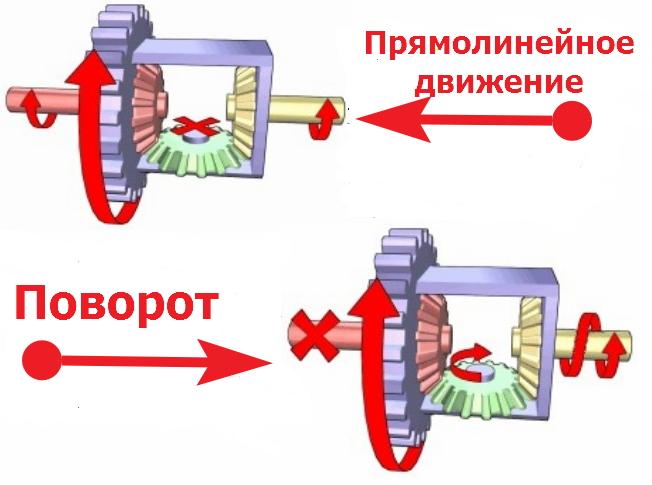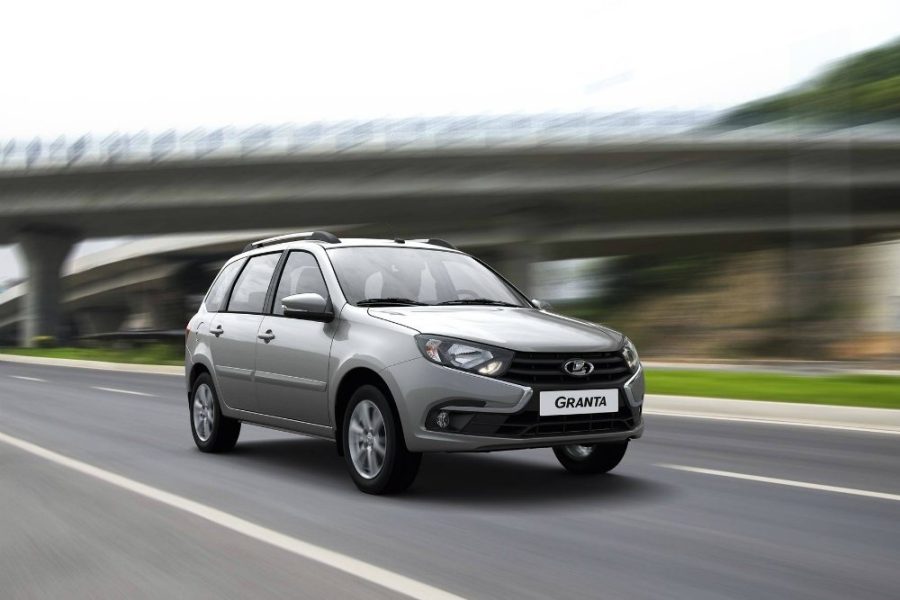
Differential. What is it and why is it used?
 An engine with a gearbox is not enough to drive a car. The differential is also necessary for the movement of the wheels.
An engine with a gearbox is not enough to drive a car. The differential is also necessary for the movement of the wheels.

Simply put, the differential serves to ensure that the wheels on the driven axle do not rotate at the same speed. In more scientific terms, the task of the differential is to compensate for the difference in the frequency of rotation of the cardan shafts of the wheels of the drive axle when they move along tracks of different lengths.
A differential is often called a differential, from the word differential. Interestingly, this is not an invention of the beginning of the automotive era. The differential was invented by the Chinese centuries ago.
For cornering
The idea of a differential is to allow the car to make turns. Well, on the drive axle, when the car is cornering, the outer wheel has to travel a greater distance than the inner wheel. This causes the outer wheel to spin faster than the inner wheel. The differential is needed to prevent both wheels from spinning at the same speed. If it were not there, one of the wheels of the drive axle would slide on the road surface.
See also Car drive joints - how to drive without damaging them
The differential not only prevents this, but also prevents unwanted stresses in the transmission, which in turn can lead to breakdowns, increased fuel consumption and increased tire wear.
Mechanism design
The differential consists of several bevel gears enclosed in a rotating housing. It is connected to the crown wheel. The transfer of torque from the gearbox (and from the engine) to the drive wheels occurs when the so-called attack shaft drives the aforementioned ring gear through a special hypoid gear (it has twisted axles and arcuate tooth lines, which allows you to transfer large loads).
In front-wheel drive vehicles, the ring gear has straight or helical teeth located along the outer circumference of the shaft. This type of solution is simpler and cheaper to manufacture and operate (the differential is combined with the gearbox), which explains why the market is dominated by front wheel drive vehicles.
See also Power Always on Four Wheels which is an overview of 4×4 drive systems.
In rear-wheel drive vehicles, the differential is hidden in a special metal case. It is clearly visible under the chassis - between the drive wheels there is a characteristic element called the rear axle.
In the middle is a cross, on which gears are mounted, called satellites, since they rotate around this element in the direction of travel, causing the gears to rotate, which in turn transmit drive to the wheels of the car. If the vehicle's wheels rotate at different speeds (for example, the vehicle is making a turn), the satellites continue to rotate on the arms of the spider.
No slippage
However, sometimes the differential is difficult to implement. This occurs when one of the vehicle's wheels is on a slippery surface such as ice. The differential then transfers nearly all of the torque to that wheel. This is because the wheel with the best grip must use more torque to overcome the internal friction in the differential.
This problem has been solved in sports cars, especially in all-wheel drive vehicles. These vehicles typically use high-resistance differentials that are able to transfer most of the torque to the wheel with the best grip.
The design of the differential uses clutches between the side gears and the housing. When one of the wheels loses traction, one of the clutches begins to counteract this phenomenon with its friction force.
See also Turbo in the car - more power, but also hassle. Guide
However, this is not the only transmission solution used in 4×4 vehicles. Most of these vehicles still have a center differential (often referred to as a center differential) which compensates for the difference in rotational speed between the driven axles. This solution eliminates the formation of unnecessary stresses in the transmission, which adversely affect the durability of the transmission system.
In addition, the center differential also distributes torque between the front and rear axles. To improve traction, every self-respecting SUV also has a gearbox, i.e. a mechanism that increases the torque transmitted to the wheels at the expense of speed.
Finally, for the most avid SUVs, cars equipped with center differentials and differential locks are designed.
According to the expert
Jerzy Staszczyk, a mechanic from Slupsk
The differential is a permanent element of the car, but only if it is used correctly. For example, he is not given sudden starts with screeching tires. Of course, the older the car, the more worn out its drive system, including the differential. This can be tested even at home. You just need to lift the part of the car where the drive wheels are. After shifting any gear, turn the steering wheel in both directions until you feel resistance. The later we feel the resistance, the greater the degree of differential wear. In the case of front-wheel drive vehicles, such play may also indicate wear on the gearbox.
Wojciech Frölichowski

